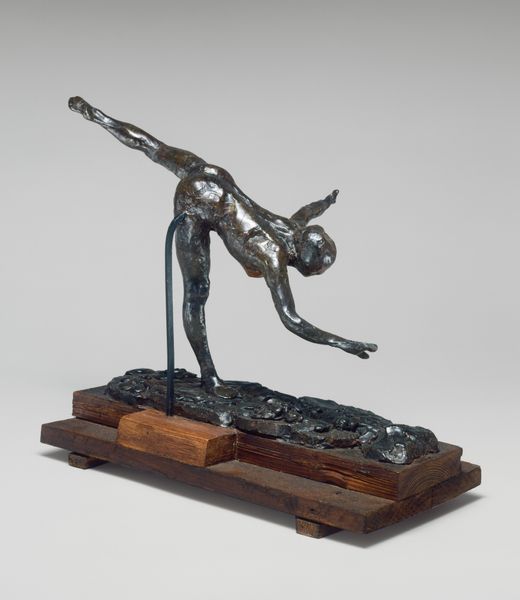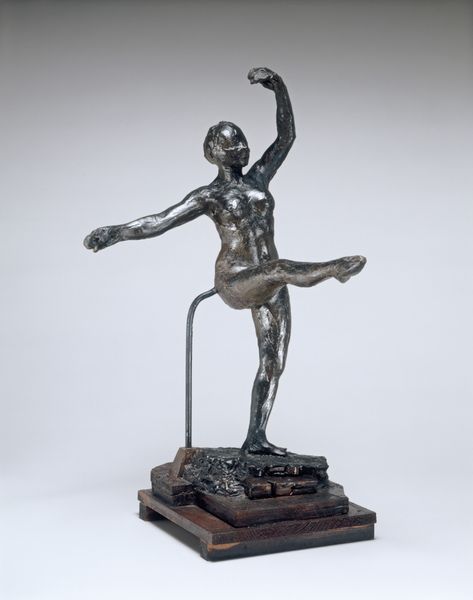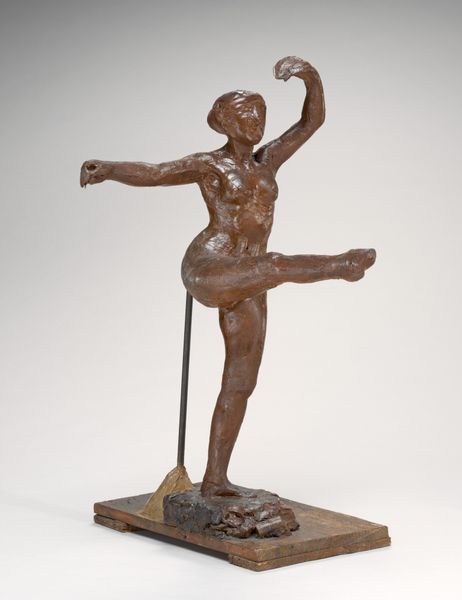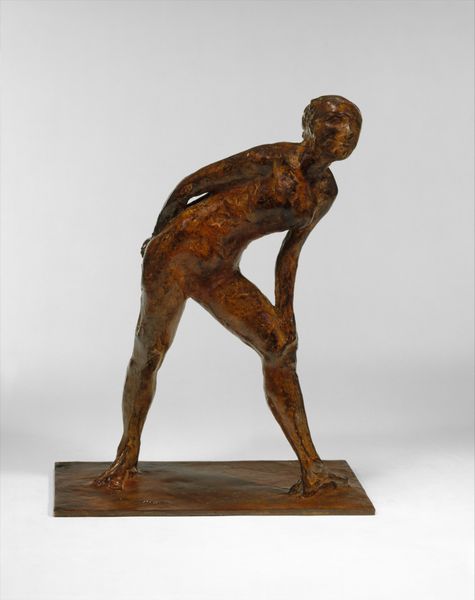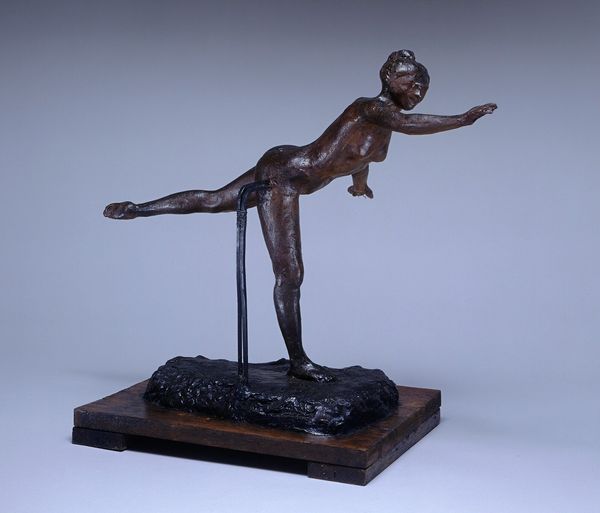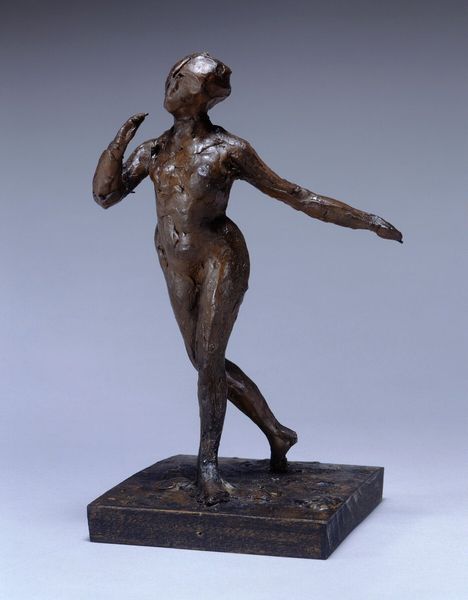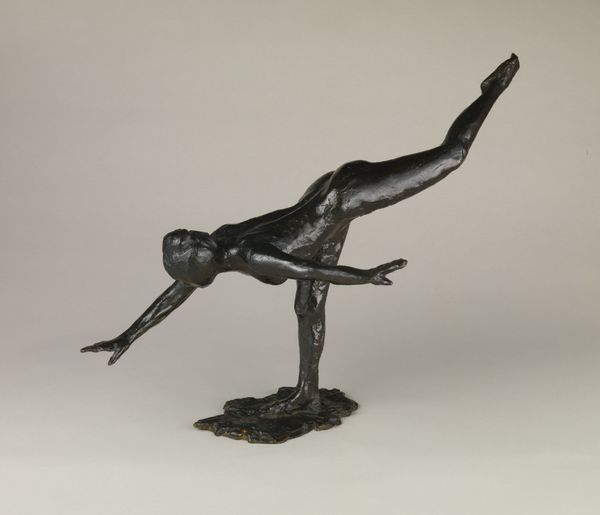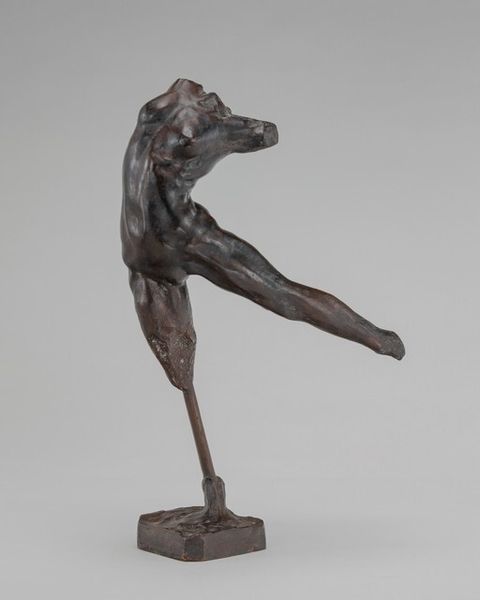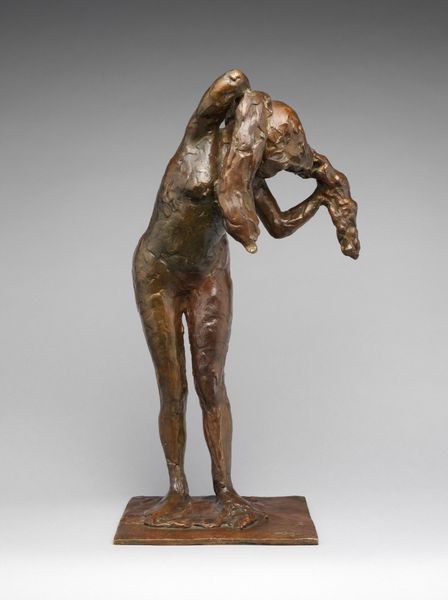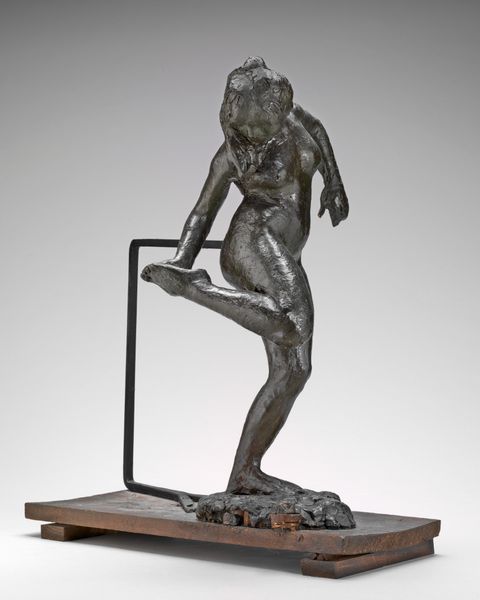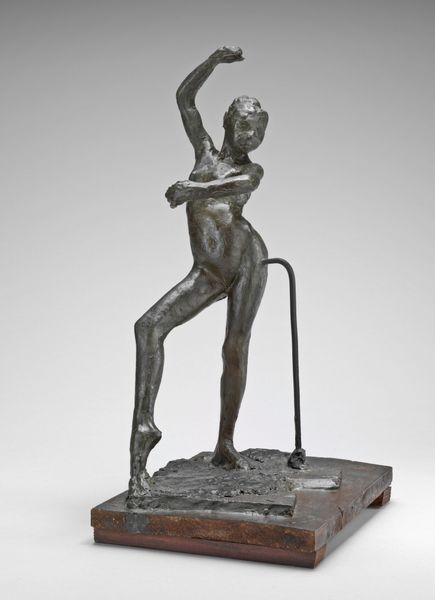
bronze, sculpture
#
portrait
#
impressionism
#
sculpture
#
bronze
#
figuration
#
sculpture
#
nude
Dimensions: overall without base: 29.9 x 39.8 x 12.1 cm (11 3/4 x 15 11/16 x 4 3/4 in.) metal frame: 40 x 53 x 0.7 cm (15 3/4 x 20 7/8 x 1/4 in.) height (of figure): 29.7 cm (11 11/16 in.)
Copyright: National Gallery of Art: CC0 1.0
Curator: What strikes me first is the somewhat melancholic mood. There's a sense of solitude despite the dynamism of the pose. Editor: Absolutely. Let’s delve into Degas’ "Arabesque over the Right Leg, Left Arm in Front", crafted between 1885 and 1890. What initially grabs you about its form? Curator: The process of creation, I think. It appears she is tethered; suspended with that hanging material at the top of the frame. Look how the industrial armature intrudes, drawing attention to the means by which this bronze figure achieves its gravity-defying stance. Editor: Yes, and that armature places her in dialogue with the social conventions surrounding ballet in late 19th-century France. Ballet dancers were under intense pressure to meet exacting physical standards; Degas highlights their athleticism but also, perhaps, hints at their constraints. It emphasizes a constructed reality and staged movements for public spectacle. Curator: Precisely! Think about the material realities. Bronze suggests permanence and value, yet the chosen pose is inherently fleeting, a momentary balance. We witness this intersection of artistry and industrial capacity through its deliberate craftsmanship. Editor: The decision to render such a commonplace subject as a ballerina in bronze certainly elevates its status. Degas was elevating what had been seen as popular entertainment to a subject of high art. His series of ballerina sculptures created quite a stir, due in part to his unconventional use of wax, and also the dancer’s costumes. Curator: It’s almost as though he’s dismantling notions of 'high art'. Editor: Or reforming it in ways that reflected modern social reality! Degas was bringing art closer to modern experience. He presents his era. The ballerina as a worker, her toil shaping art. It underscores the performative aspects of class and social identity. Curator: Thank you, by analyzing it that way you change how I will examine that every time I encounter this type of art in the future. Editor: My pleasure; it is something I needed to discuss.
Comments
No comments
Be the first to comment and join the conversation on the ultimate creative platform.

